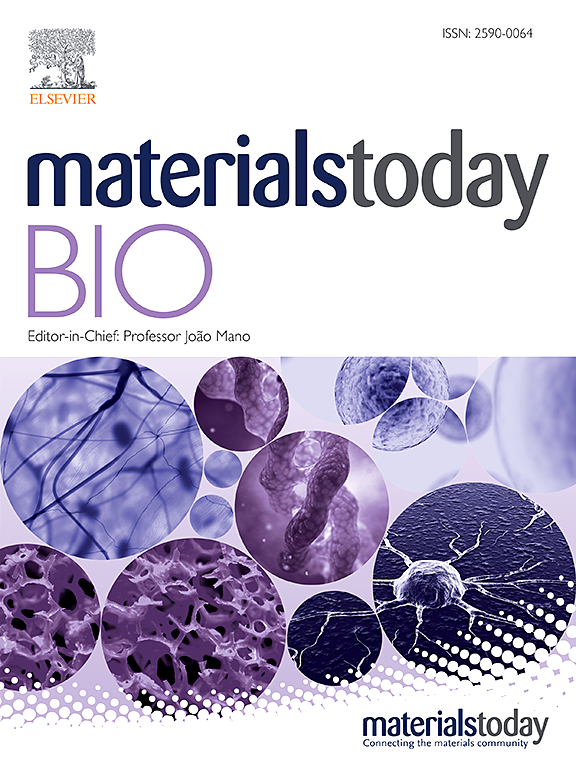Tβ4-exosome-loaded hemostatic and antibacterial hydrogel to improve vascular regeneration and modulate macrophage polarization for diabetic wound treatment
IF 8.7
1区 医学
Q1 ENGINEERING, BIOMEDICAL
引用次数: 0
Abstract
Diabetic wounds often exhibit delayed healing due to compromised vascular function and intensified inflammation. In this study, we overexpressed Thymosin β4 (Tβ4) in Adipose-Derived Stem Cells (ADSCs) to produce Exosomes (Exos) rich in Tβ4. We then utilized a dual photopolymerizable hydrogel composed of Hyaluronic Acid Methacryloyl (HAMA) and Poly-L-lysine Methacryloyl (PLMA) for the sustained release of Tβ4-Exos on diabetic wounds. The results showed that Tβ4-Exos could stimulate angiogenesis and collagen synthesis, and mitigate inflammation in diabetic wounds by promoting the polarization of M1-type macrophages and inhibiting that of M2-type macrophages. Furthermore, Tβ4-Exos was found to activate the PI3K/AKT/mTOR/HIF-1a signaling pathway, thereby enhancing vascular proliferation. In summary, the sustained release of Tβ4-Exos in HAMA-PLMA (HP) hydrogel and the management of inflammation through the upregulation of the HIF-1a pathway and modulation of macrophage polarization in vascular proliferation significantly accelerated the healing process of diabetic wounds.

求助全文
约1分钟内获得全文
求助全文
来源期刊

Materials Today Bio
Multiple-
CiteScore
8.30
自引率
4.90%
发文量
303
审稿时长
30 days
期刊介绍:
Materials Today Bio is a multidisciplinary journal that specializes in the intersection between biology and materials science, chemistry, physics, engineering, and medicine. It covers various aspects such as the design and assembly of new structures, their interaction with biological systems, functionalization, bioimaging, therapies, and diagnostics in healthcare. The journal aims to showcase the most significant advancements and discoveries in this field. As part of the Materials Today family, Materials Today Bio provides rigorous peer review, quick decision-making, and high visibility for authors. It is indexed in Scopus, PubMed Central, Emerging Sources, Citation Index (ESCI), and Directory of Open Access Journals (DOAJ).
 求助内容:
求助内容: 应助结果提醒方式:
应助结果提醒方式:


